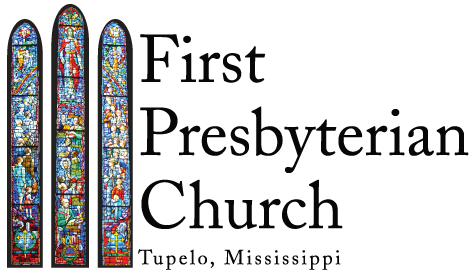( hover image )
( hover image )
<h3>History 101.17 – Missionaries depicted in the Chancel Window</h3>
The below article was written by Dr. Eugene Murphey and was published in The Tower newsletter of July 2006.
![]()
[responsivevoice voice=”US English Male”]
The world-wide-web is a great source for all kinds of information, some good and some not so good, as was quickly appreciated when trying to find biographical information about one of the historical figures in the middle stained glass lancet window in the church chancel area. Motte Martin proved a real challenge when the computer search engine found 123,000 possible bits of information related to that name or its numerous variations. After plowing through several thousand items, mostly with no connection to the person sought after, I learned that ‘the real Motte Martin’ lived in Marlin, TX and as a youth joined the First Presbyterian Church there in 1894. Eight years later he became one of the earliest missionaries to the Congo. Further information about his life and work may be provided later when a query to the Mission Board in Atlanta is answered. It is of interest that Martin’s home church in Marlin started out as a mission church in 1852 and met for several years in the local Falls County Court House. The church pulpit was hoisted into the rafters of the courtroom whenever court was in session.
Another figure in the same window is David Brainerd, who became a missionary to the Native American Indians in eastern Pennsylvania, New Jersey, and New York. Born in Connecticut in 1718, he lived only twenty-nine years, dying at this early age of tuberculosis. However, in his short ministry, he is said to have had tremendous Christian influence on large numbers of the people he served. Brainerd was not a finished scholar, having been expelled early from Yale University because of criticizing a professor and also being briefly associated with a rebel religious group. Nevertheless, he kept a voluminous diary of missionary work and beliefs. His published Life and Diary of David Brainerd is highly recommended reading for Christians everywhere.
The last person depicted in the center stained glass panel is William Carey, better known to most of us as the namesake of William Carey College in Hattiesburg, Ms. It is one of several schools in this country named for this missionary. Carey was born in England in 1761 in the small Northamptonshire village of Paulerspury and, along with his parents, was a member of the Church of England. At age eighteen he changed to the Congregational Church and then in 1783 was baptized and joined the Particular Baptists. He worked as a cobbler’s apprentice and schooled himself on the side, by age twenty-one learning four languages – Italian, Hebrew, Greek and Latin – and working on Dutch and French. His studies led him to see the world’s need for Christ; in the quiet of his cobbler’s shop, he heard and accepted God’s call. He is reported to have surrendered to the call crying out, ‘Here am I, send me!’
Cary’s missionary efforts first met with disinterest and lack of enthusiasm, but eventually, his dedication and dogged persistence led to the formation of the well-known support organization, the Missionary Society. Cary wrote and published his famous Enquiry Into the Obligations of the Christians to Use Means for the Conversion of the Heather and dedicated all proceeds from the book to the Society because he did not have any other money to contribute.
In 1793 Carey went to India as a missionary and served there forty-one years. He survived the disappointment of no converts in the first seven years he was there but lived to see India open its doors to Christian missionaries and the scriptures translated into forty languages. He died in 1824 at the age of 73 without returning to England.
[/responsivevoice]
– Eugene M. Murphey, M.D.
